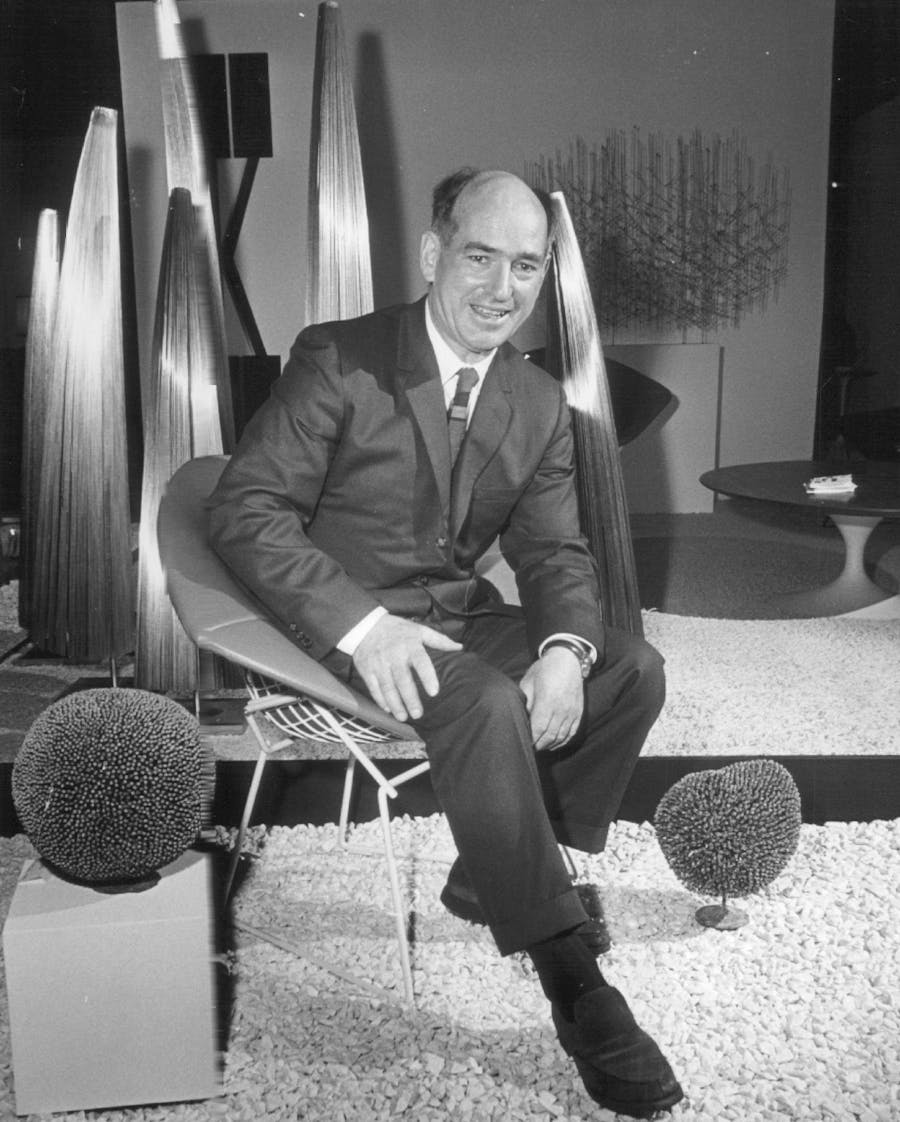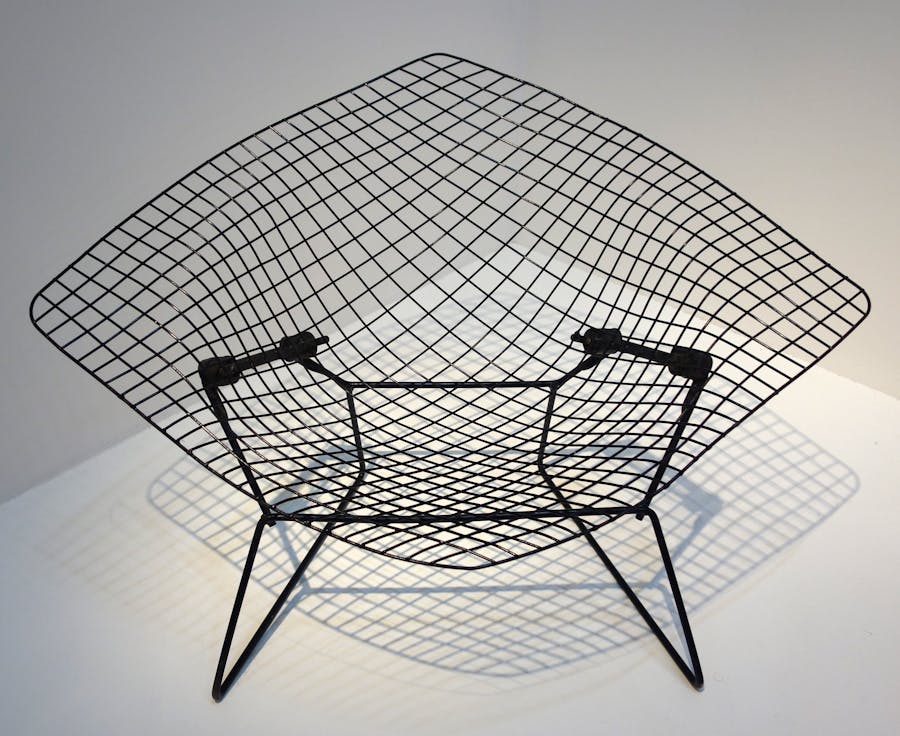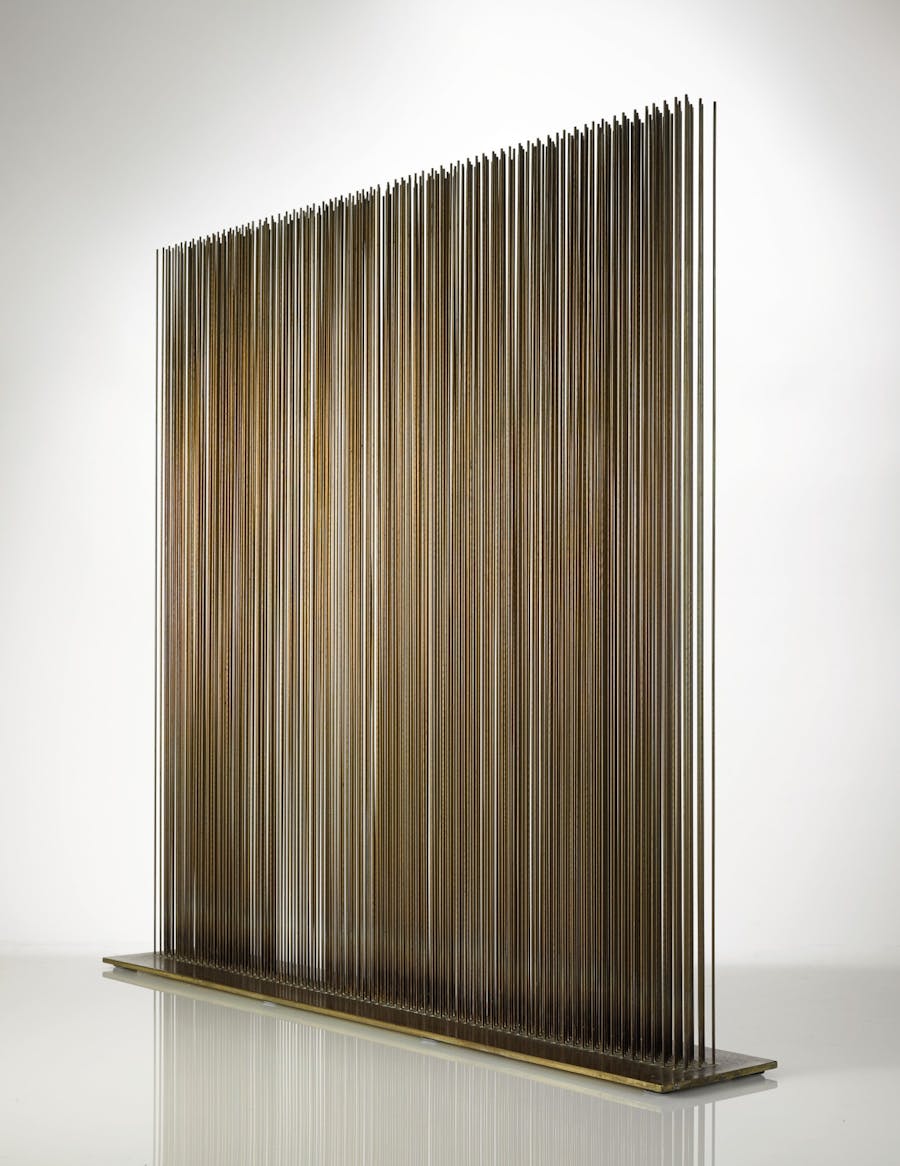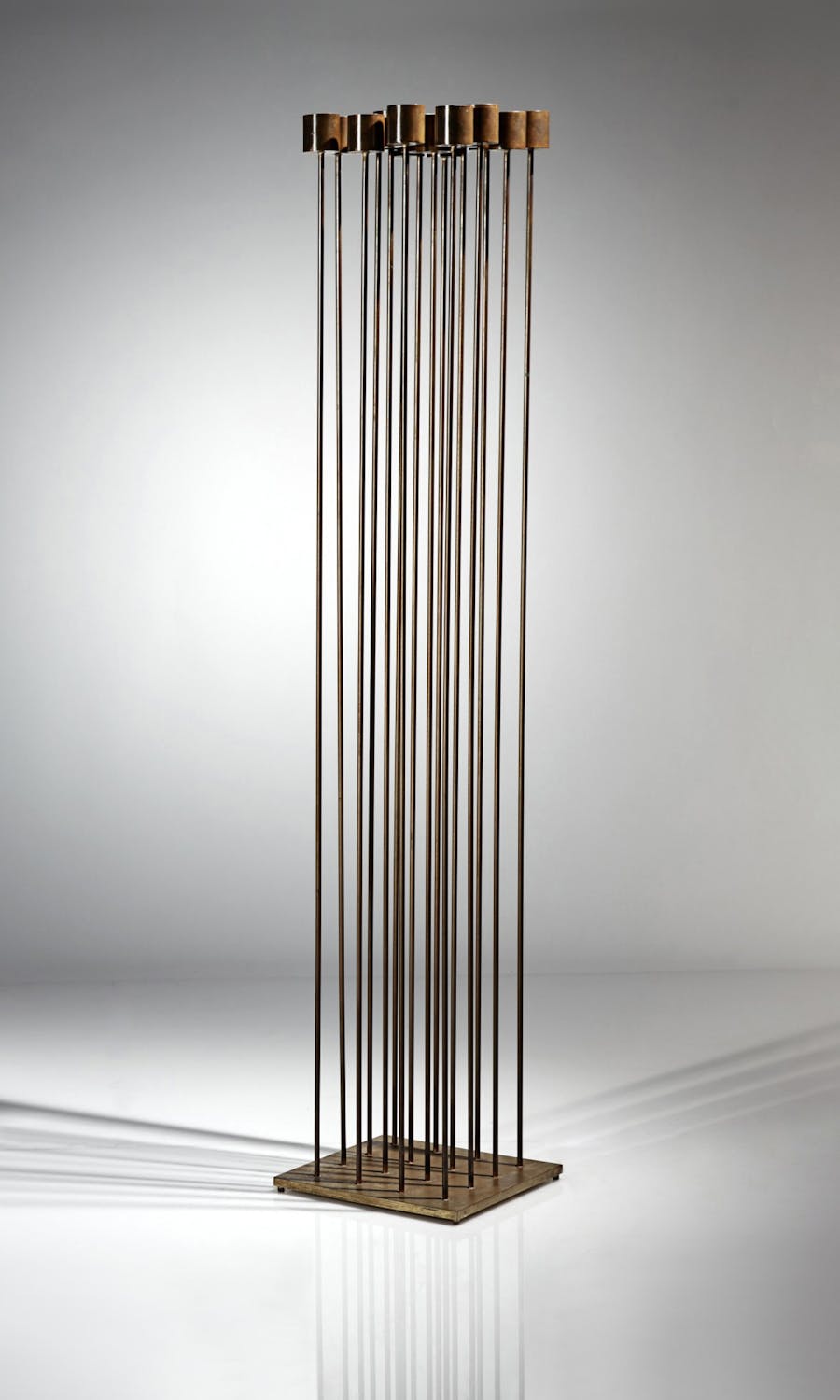Harry Bertoia's Sonambients: The Sound of Sculpture
Italian-American artist Harry Bertoia combined his love of art and music in his Sonambient sculptures, which were able to be played like instruments.
Harry Bertoia is probably best known for his coarse-meshed metal chairs that he designed for Knoll in the 1950s. However, thanks to his enormous success, he was later able to put furniture aside in order to concentrate fully on his true passion: sculpture. His sound sculptures, the "Sonambients", combined Bertoia's artistic talent with his interest in music.

Bertoia was born in 1915 in San Lorenzo, Fruili, Italy. Named Arri, he showed artistic prowess from a young age: brides would ask him to embroider their wedding linen, and his drawing teacher admitted his pupil was too advanced for his tutelage. At the age of 15, having exhausted his resources, Bertoia moved to Detroit to further his studies, Americanizing his name to “Harry.” He became the most awarded student in the history of the School of the Detroit Society of Arts and Crafts, held a residency at the renowned Cranbrook Academy of Art, and consistently sold his work to institutions like the Guggenheim.

There he studied and developed into a well-rounded artist: he created jewelry and made prints, taught, and designed furniture along with Ray and Charles Eames and Florence Knoll. After the great success of his wire chairs, which he had designed specifically for Knoll, the company paid him out, allowing Harry to concentrate exclusively on his sculptures.
Related: 10 Ingenious Chairs: Design Classics of the 20th Century

He found friends in the Saarinen family, Kandinsky, and Miro. They aided in his discovery of medium: metalwork, welding, and ergonomic utility. Throughout his life, Bertoia would be a key member in the Midcentury Modern movement, craft over 50 monumental public works, and exhibit his pieces around the world. By the time of his death—at the age of 63, from lung cancer exacerbated by his metalwork—he was a figure of eminence.
Related: 6 Giants of Mid-Century Modern Design

This brings one to the world of Sonambient. Bertoia was enthralled by music, as it was one of the few artistic skills he did not own himself. In this series of sculptures, he crafted “a musical instrument that anyone could play instantly.” Inspired by a traveling caravan of his youth, Bertoia utilized brass, bronze, beryllium copper, aluminum, monel, Inconel, and gold plating to model the rhythm of beating pots and pans. From his first prototype from 1959 until his death in 1978, Bertoia continued his work on his Sonambients. He made thousands, ranging in size from six inches to 20 feet, and ensured that no two were the same. With his musician brother’s help, eleven albums were recorded of Sonambient concerts.
Want more articles like this straight to your inbox? Subscribe to our free newsletter here!

Today, Bertoia's Sonambients come up to auction on occasion with impressive estimates, ranging from tens to hundreds of thousands of dollars. His most expensive Sonambient, measuring 71½ x 24 x 8 inches from 1975, sold at Christie's for $422,500 in 2012.


